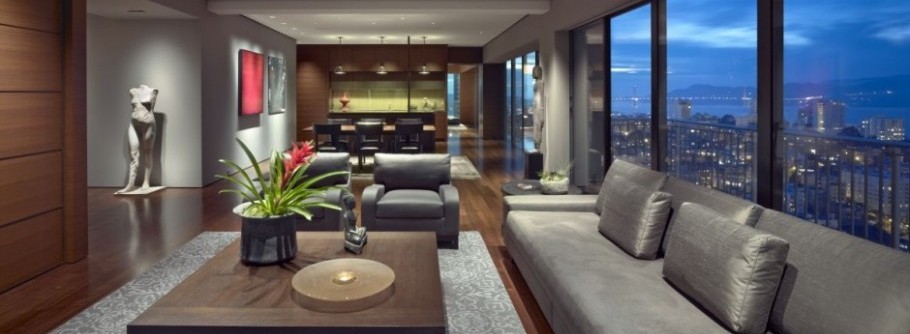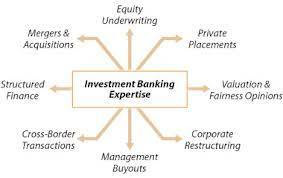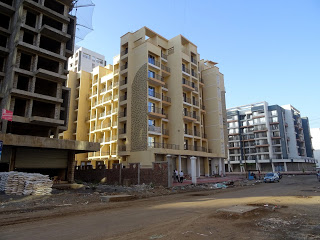Leader (Lead Bank/Financial Institution) – Generally one of the financing body is treated as a Leader who is given authority to exercise the powers of the mortgagee contained in the deed or in law.
Such agreement may be incorporated in the deed of mortgage itself or made separately to which the mortgagor Company is also made a consenting or confirming party. By such agreement the rights of the financial bodies are made to rank pari passu that is on equal footing irrespective of the amounts advanced by them. Such agreement is known as
PARI PASSU AGREEMENT and is also known as CONSORTIUM AGREEMENT.
Such an agreement is also sometimes entered into when two or more financing bodies advance loans to the same borrower company on different occasions, when the subsequent advancing body insists on its loan being made on pari passu basis with the previous advancing body and to which the latter agrees. In such a case the agreement provides that all the mortgages shall rank pari passu and will be enforceable on that basis and irrespective of their priorities.
Such agreements when separately entered into would require registration under the Registration Act, 1908.
Salient features of a Pari Passu agreement:
1. The Banks/Financial Institutions shall grant accommodation to the Company by way of Cash Credit facility of an amount not exceeding certain aggregate limit; and such aggregate limit shall stand distributed among the Banks/Financial Institutions (percentage or share basis). And at the aggregate limit the respective shares of the Banks/Financial Institutions may be varied from time to time by mutual consent.
2. The Banks/Financial Institutions will open in their respective books separate term loan and/or Cash Credit accounts in the name of the Company irrespective of such term loan and/or Cash Credit facility with each of them and will ensure that drawings out of and payments into each of the said term loan and/or cash credit accounts are regulated by the Company in such a manner that the amounts due from time to time for principal and interest on each of the said term loan and/or cash credit accounts are kept as nearly as practicable pro rata to the respective limits granted by the Banks/Financial Institutions.
3. The rights under and in respect of the security created by the Company in favour of the Banks/Financial Institutions by way of mortgage and hypothecation shall rank pari passu in all respects and for all intents and to all purposes inter se the Banks/Financial Institutions and without any preference or priority of one over the other(s). The Banks/Financial Institutions shall stand in the same position without claiming prior rights and divide and appropriate the realization of the security in such shares and such manner as mentioned herein.
4. Except as regards acts, matters and things which may be done by each of the Banks/Financial Institutions including as provided in the said Deed of Mortgage and the Deed of Hypothecation, the Leader will act on its own behalf and on behalf of the other Banks/Financial Institutions in all other acts, matters and things pertaining to and connected with the said accommodation by way of term loan and/or cash credit facility and the security thereof. The other Banks/Financial Institutions hereby authorize the Leader to act as their agent and for and on behalf of each of them to function as such Leading Bank/Financial Institution in respect of all other acts, matters and things pertaining to and connected with the said accommodation by way of cash credit facility and security thereof.
5. Except as regards acts, matters and things which may be done by each of the Banks/Financial Institutions as provided in the said Deed of Mortgage and the Deed of Hypothecation, all rights and powers vested in the Banks/Financial Institutions under the said Deed of Mortgage and the Deed of Hypothecation and under any other arrangements, agreements or otherwise in respect of all other acts, matters and things pertaining to and connected with the said accommodation by way of term loan and/or cash credit facility and security thereof by way of mortgage and hypothecation or otherwise shall be exercised by the Banks/Financial Institutions, through the Leader.Taking possession or realization of outstanding dues through Sale by the participant Banks/Financial Institutions.
6. Without prejudice to the preceding two clauses i.e., 4 and 5 herein above, any one or more of the Banks/Financial Institutions may also take any steps to take possession or realize or enforce the mortgaged and hypothecated security either through the intervention of the Court or otherwise howsoever and in whatever manner it/they may think fit and for that purpose exercise all rights and powers vested in it/them by Law and/or under the said Deed of Mortgage and Deed of Hypothecation and/or under any other arrangements or agreements or otherwise, or may close the term loan and/or cash credit account(s).
Provided that, at the beginning of the working hours of the day immediately preceding any such action intended to be taken by any one or more of the Banks/ Financial Institutions under this clause, due notice of such intention and of the action intended to be taken shall be communicated in writing by such Banks/Financial Institutions to the other Banks/Financial Institutions and the latter or any of them shall immediately, as soon as possible, after the receipt of such notice/intimation, demand repayment of the monies due on the relative term loan and/or cash credit account(s) of the Company with its/them and notify its/their respective intentions in writing either to act jointly in such action with such Banks/Financial Institutions taking the action or otherwise. In the event of the Banks/Financial Institutions agreeing to act jointly in such action then all the Banks/Financial Institutions shall act jointly through the Leader. In the event of failure, neglect or refusal by any one or more of such other Banks/Financial Institutions to join in any such action, the Banks/Financial Institutions taking action shall make the other Banks/Financial Institutions so failing, neglecting or refusing, as party Defendant(s) in any legal proceedings which such Banks/Financial Institutions may take against the Company. The proceeds of any realizations in such legal proceedings shall be available for and be appropriated to the indebtedness of the Company to all the Banks/Financial Institutions due and outstanding under the respective term loan and/or cash credit account(s) with such Banks/Financial Institutions. The failure, neglect or refusal of any of the Banks/Financial Institutions to join in such action shall not affect the rights of such Banks/Financial Institutions so failing, neglecting or refusing in any manner whatsoever vis-a-vis the Company and/or the mortgaged and hypothecated security.
7. In the event of the Banks/Financial Institutions deciding in common to enforce the security and realize the amount due to them respectively, the Leader shall take necessary action, in consultation with the other Banks/Financial Institutions, to enforce the security either by selling the mortgaged property and hypothecated goods by auction sale outside the Court and in exercise of the power contained in the said Deeds or by filing a suit in the proper Court for sale of the said properties and realization of the amounts due to the Banks/Financial Institutions. In the event of taking such action the Leader will be entitled to take possession of the property or to get a receiver appointed thereof through Court and to make all such applications and to take such other action as may be thought proper and in the interest of the Banks/Financial Institutions. The Leader will always keep informed the other Banks/Financial Institutions of such actions and applications and the results thereof. In the event of taking any legal proceeding the same may be taken by the Leader in its own name as Plaintiff and join the other Banks/Financial Institutions as co-plaintiffs or as formal defendants and the Banks/Financial Institutions shall give all co-operation to the Leader in that behalf, as may be required by Law.
8. Subject to the provisions contained in preceding two clauses i.e., 6 and 7 herein above, in the event of the mortgaged and hypothecated security being realized howsoever and in whatever manner, the proceeds of such realization, including monies received from Insurance Companies or otherwise in respect of the security remaining after deducting there from the cost, charges and expenses incidental to such realizations shall in the first instance be appropriate towards or in satisfaction of all indebtedness of the Company due and outstanding to the Banks/Financial Institutions, such indebtedness being the amount outstanding under the term loan and/or cash credit accounts, and the interest due thereon upto the date of realization of the security whether actually debited or not to the said term loan and/or cash credit accounts together with any cost, charges and expenses debitable to the term loan and/or cash credit accounts whether actually debited or not, pro-rata in accordance with the total amount of such indebtedness due and outstanding under and in respect of the said term loan and/or cash credit accounts as aforesaid with each of the Banks/Financial Institutions and thereafter the balance, if any, shall be available for, and be appropriated to the outstanding indebtedness or liabilities of the Company on any account or in any manner to the Banks/Financial Institutions pro-rata in accordance with the total amount of such other outstanding indebtedness or liabilities. And in the event of the net proceeds of realization remaining as aforesaid being insufficient for repayment of whole of the respective amounts due to the Banks/Financial Institutions the same shall be appropriated in liquidation of the indebtedness of the company to the Banks/Financial Institutions as aforesaid pro-rata in accordance with the total amount of such indebtedness and liabilities. Until such appropriation, the monies realized by the Leader or any or more of the Banks/Financial Institutions or by its/their agents, nominees, officers, shall be held by the Leader or any such Banks/Financial Institutions or by its/their agents, nominees or Officers in Trust for all the Banks/Financial Institutions in accordance with their respective rights.
In the event of the net sale proceeds found insufficient to pay of the amounts due to the Banks/Financial Institutions as aforesaid the Banks/Financial Institutions or any of them will be entitled to take separate proceedings to realize the deficit in such way or manner as they or it think fit.
(d) Renewal /Enhancement of limits
9. Where it is desired that an increase in the aggregate term loan and/or cash credit limit shall be made and/or that the shares of the various Banks/Financial Institutions shall be varied, the Company shall be required to apply to the Leader which shall conduct the initial appraisal for the grant or otherwise of such increase in limit or change in the distribution of the limits and shall approve, after consultation with and by the consent of each of the Banks/Financial Institutions of such increased limit, including the distribution of such increased limit or any change in the allocation of the limit among the Banks/Financial Institutions.
10. The Company shall be required to send to all the Banks/Financial Institutions simultaneously the stock statements, all financial and other statements, reports, returns, certificates and information and such other periodical data as may be decided upon. The Leader shall work out the drawing power of the Company under the Term loan and/or Cash Credit accounts maintained with each Banks/Financial Institutions and advise as early as possible the other Banks/Financial Institutions of the drawing powers of the Company allocated to each of them.
11. Each of the Banks/Financial Institutions shall advise the other Banks/ Financial Institutions before the 5th working day of each month figures relating to the average drawing, total credit and debit summations and maximum & minimum drawings during the previous month.
12. Each of the Banks/Financial Institutions shall adhere to the drawing powers allocated to them and will not normally permit excess drawings otherwise than with the specific consent of all the Banks/Financial Institutions.
(f) Obtain information from the Company at periodical intervals:
13. The Leader shall from time to time call upon the Company and obtain from the Company
(i) an inventory of upto date hypothecated goods and book debts;
(ii) copies of the early balance sheet and profit & loss account statement of the
Company;
(iv) a copy of the annual report of the Company;
(v) a copy of the minutes of the General meetings of the share holders of the
Company;
(vi) Information regarding any suits or legal proceedings taken by or against the
Company;
(vii) such other information as the Leader may think fit and such information and copies of such documents as afore said shall be supplied to the other Banks/
Financial Institutions forthwith.Nothing however will prevent any Bank/Financial Institution from calling for such documents and information from the Company independently but in such case such information and copies of documents shall be passed on by such Bank/Financial Institution to the others of them.
(g) Further loan and Enforcing additional security:
14. Nothing shall prevent any of the Banks/Financial Institutions from enforcing any additional security by way of personal guarantees of the Directors of the Company or otherwise taken in respect of the term loan and/or cash credit facility covered by the Deeds of Mortgage and Hypothecation provided that the moneys realized there from shall be credited to the account of the said term loan or cash credit facility and provi-ded intimation in writing is given by such Banks/Financial Institutions to the others of them.
15. If any of the Banks/Financial Institutions advances any further loan to the Company and obtains further security of the properties comprised in the Deeds of Mortgage and Hypothecation, such Banks/Financial Institutions shall give immediately information thereof to the other Banks/Financial Institutions.
(h) Any change in the terms and conditions of the facilities:
16. None of the Banks/Financial Institutions shall agree to any change in the terms and conditions of the term loan and/or cash credit facility agreed to between such Banks/Financial Institutions and Company without giving at least one weeks prior intimation thereof in writing to the other Banks/Financial Institutions.
(i) Rights and Responsibilities of the Leader:
17. Subject to or without prejudice to what is herein provided, each of the Banks/ Financial Institutions agree that all acts done by the Leader pursuant to the terms of these presents as well as in exercising the powers of the Banks/Financial Institutions as secured creditors under the said Deeds of Mortgage and Hypothecation shall, be deemed to be the acts by or on behalf of all the Banks/Financial Institutions and each of such Bank/Financial Institution agree to ratify the same.
19. All inspections of the mortgaged and hypothecated security or of the affairs of the Company will be conducted by a team comprising representatives of the Leader and such other Banks/Financial Institutions as may be determined from time to time in consultation with and by the consent of all the Banks/Financial Institutions.
20. The Leader shall obtain from the Company at the beginning of every quarter of the calendar year an estimate of the aggregate amount that it proposes to draw during that quarter and the Leader shall advise the other Banks/Financial Institutions their pro-rata commitments for the ensuing quarter. It shall be open to each of the Banks/Financial Institutions to levy separate commitment charge at such rate as it may determine from time to time to the Company and any such commitment charge may be debited to the Company’s term loan and/or cash credit account(s) with the Banks/Financial Institutions.
21. The other Banking business of the Company and/or the rights, benefits, obligations and liabilities arising out of such business shall be shared among the Banks /Financial Institutions on a pro-rata basis in relation to the limits allocated to each of the Banks/Financial Institutions. It shall be open to the Company to place such business directly with the Banks/Financial Institutions and the data in this regard shall be exchanged among the Banks/Financial Institutions through the Leader every quarter or at such intervals as may be agreed by and among the Banks/Financial Institutions so that necessary directions could be given by the Leader to the Company with a view to ensuring that each of the Banks/Financial Institutions has an appropriate share in the other banking business of the Company and/or the rights, benefits, obligations and liabilities arising out of such business. Provided, however, that such other banking business of the Company already being handled by any or more of the Banks/Financial Institutions at the commencement of the participation arrangement and/or rights, benefits, obligations and liabilities arising from such business will not be shared with the other Banks/Financial Institutions and all rights, benefits, obligations and liabilities arising out of such business will accrue to or be suffered by the concerned Banks/Financial Institutions transacting such business.
(j) Levy of Service charges by the Leader:
22. The Leader may charge a fee for its service rendered as a Lead Bank/ Financial Institution and such fee shall be determined in consultation with and by the consent of all the Banks/Financial Institutions and such service e fee shall be borne by the Company and shall be debitable to the term loan and/or cash credit account maintained with the Leader. In case it is not possible to recover the service fee from the Company or from security realized, all the Banks/Financial Institutions will share the service fee in the proportion to the limits sanctioned by them and reimburse the Leader with the same.
23. The Leader shall keep the other Banks/Financial Institutions informed of all the major developments relating to the affairs of the Company suitably and, if necessary, by arranging periodical meetings of the representatives of all the Banks/ Financial Institutions being parties hereto to discuss the matters arising out of the said accommodation and take decisions in respect thereof and such meetings may be held with or without an invitation having been sent to the Company for attending the meetings. Also, the other Banks/Financial Institutions or any one or more of them coming to know of any developments relating to the affairs of the Company shall keep the other Banks/Financial Institutions including the Leader informed about the same and the Leader shall in such cases, if necessary arrange special meetings of the Banks/ Financial Institutions.
(a) by realization of the mortgaged and hypothecated security
(b) from the Insurers in respect of the Insurance of mortgaged and hypothecated security in any other manner from the Company, shall be held by the Leader or such other Banks/Financial Institutions for and on behalf of all the Banks/Financial Institutions and shall be paid and appropriated in the manner and proportion as indicated in these presents.
25. In case any one or more of the Banks/Financial Institutions intend to withdraw from the participating arrangement, the manner in which and the extent to which such withdrawal shall take place shall be discussed and settled between all the Banks/ Financial Institutions.
26. No Banks/Financial Institutions shall without the consent of the other(s) agree to any modification of the terms of the said Deed of mortgage and Deed of Hypothecation nor without like consent grant time or other indulgence to the Company after the mortgaged and hypothecated security has become enforceable or is being enforced.
27. All acts, deeds and things done or purported to be done by the Leader for and on behalf of the Banks/Financial Institutions shall be treated as acts, deeds and things done by all of them and the Banks/Financial Institutions shall ratify and confirm the same and shall indemnify and keep indemnified the Leader in respect thereof.
28. Without prejudice to the generality on the rights, powers and responsibilities of the Leader, it shall be the responsibility of the Leader:
(i) to ensure that all the requirements of Law, necessary for the conduct of the said accommodation by way of the term loan and/or cash credit facility and the creation and continuance of the security thereof are complied with; and
(ii) in case it is necessary to file a suit for any reason whatsoever in the conduct of the said accommodation by way of term loan and/or cash credit facility, to file a suit(s) against the Company on its behalf and on behalf of the Banks/Financial Institutions with the consent of and at the cost of all the Banks/Financial Institutions.
29. The Banks/Financial Institutions other than the Leader shall, if necessary, execute General Power of Attorney in favour of the Leader authorizing the latter to execute all powers and rights given to the Banks/Financial Institutions under the said Deed of Mortgage and Deed of Hypothecation for the protection, enforcement and realization of the security created thereby provided that no such powers or right shall be exercised by the Leader under such power of attorney without the express consent of the other Banks/Financial Institutions and shall not be exercised to the prejudice of the rights of the other Banks/Financial Institutions.
30. The original Deed of Mortgage and Deed of Hypothecation and all the title deeds relating to the Mortgaged properties handed over by the Company shall remain in the custody of the Leader and the other Banks/Financial Institutions shall be furnished with the true copies thereof for their record. The other Banks/Financial Institutions jointly or separately shall have the right to take inspection of such deeds and title deeds as and when required and to be furnished with copies or extracts there from as and when required.










